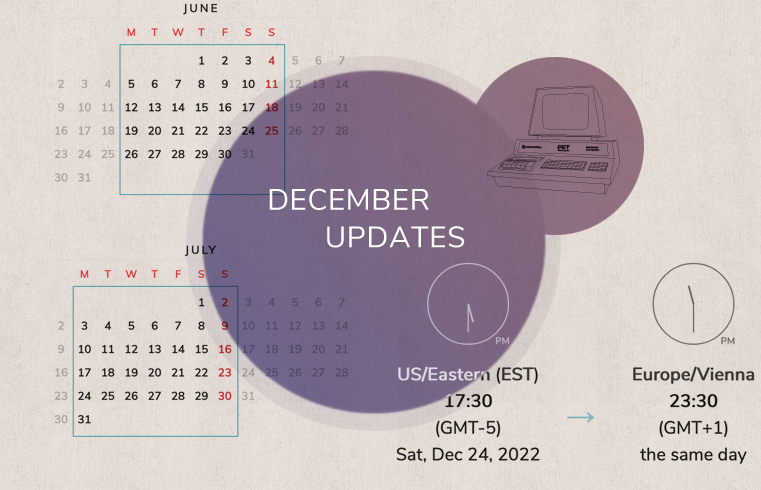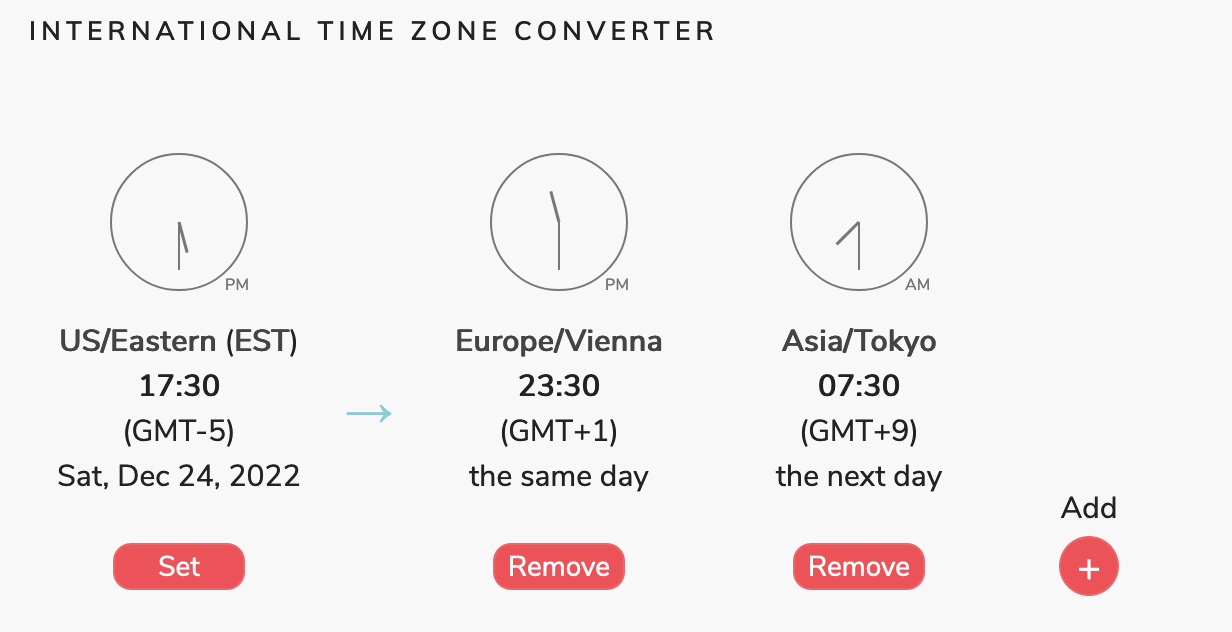December Updates
Assorted site news.

It’s been a while since my last post — sorry (a more substantial post is a bit long in the tooth, but may appear soon) —, so it may time to quickly announce a few updates to the site.
Since it’s end of the year, which is also the traditional time to look for a calendar, there is now one at www.masswerk.at/time/calendar. Pick a year and print it out in order to show off that you really understand how days work! :-). We had this already at our time display, but now you can have an entire year of this! E.g., here’s a link to 2023, which happens to be next year. (Make sure to disable headers & footers and to enable backgrounds in your print dialog.) If you really don’t like the idea of the layout (how dare you?), you may also export a no-frills plain-text version.
Another update is also related to time, namely it’s an international time zone conversion utility. Which can be found at www.masswerk.at/time/convert.
Now, JavaScript (and by this, your browser) features localized dates with time zones, nowadays, but this only supports foward conversions from UTC timestamps to localized dates. This, however, also involves finding a corresponding UTC date to a given local date so that you can pick a date and time in one timezone and see what this may be in annother time zone. Which is, what this utility does. (Please mind the disclaimer. Especially mind that things become a bit tricky with DST/standard time crossovers and there may be more than a single UTC reference for a given localized time-date combination. E.g., when a local clock rewinds to 2:00 am at 3:00 am, once a year.)

This is what it looks like. Technically, we use our trusty TZIntl.js library for this. And thanks to this, this utility runs entirely on your local computer, in the browser, without connecting to an external service or leaking any data.
Links to both utilities can be found at the bottom of our fancy time display, which is always behind the tiny clock icon at the very end of the site navigation.
The final news is about the PET 2001 emulator:
First, the emulator now supports quantifiers in PETSCII escapes in any BASIC source file or pasted code, like "{4 SPACES}" or "{12 RIGHT}", which adds another layer of compatibility to some listings as may be found in traditional type-in code. (It may even come handy for designing screen output more comfortably.) The other one is a rather major one, but without much of an external effect: The emulator now supports varying ROM sizes, which means, it now also comes with ROM 4.0. However, the IEEE interface emulation still only supports LOAD and SAVE commands, so there isn’t much utility to the advanced disk commands of Commodore BASIC 4.0. Still, there is otherwise full support for ROM 4.0, including text-to-BASIC, BASIC-to-text imports and exports and even click-anywhere-on-the-screen-to-place-the-cursor functionality (AKA, “Touch Cursor”). I guess, still sufficient added capability to elevate the emulator to version 1.5.